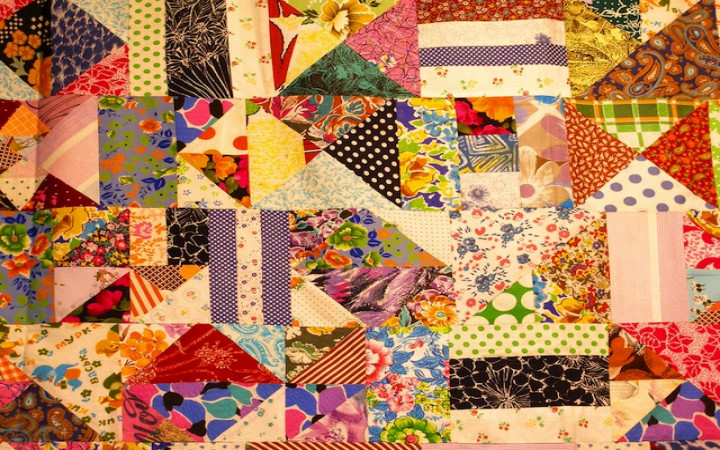Few things are cozier than wrapping up in a quilt by the fire on a snowy night. Quilts also make beautiful works of art if spread over a bed or hung on the wall.
But did you know quilts can also tell stories? No need to open a book, we can open a quilt to find out what stories these beautiful blankets have to share.
Quilts are a narrative part of many cultures. Historically, traditional quilts were made by hand.
In many cases, groups of friends and neighbors would gather to work on one quilt together. This greatly reduced the amount of time it would have taken one person to make a quilt. These social gatherings were known as “quilting bees."
The materials for traditional quilts came from many sources. Often the cloth used to make the blankets came from familiar items, such as clothing. From the choice of material to the design and pattern, quilts can tell stories about the time period in which they were made and the people who made them.
One very dear type of quilt is the friendship quilt. Friendship quilts are made by friends as a gift of remembrance.
They can be given to a friend or relative to commemorate a wedding or a new baby. Sometimes they are given to a friend who is moving away.
Typically, a friendship quilt is made up of different squares. Each of these friendship blocks is signed by one of the friends and quilters.
Sometimes the blocks may include the date or a personal message, too. In this way, friendship quilts are a bit like modern-day scrapbooks.
Another popular traditional pattern for quilts is known as the “log cabin" pattern. Quilters have been creating log cabin quilts in the United States since the mid-1800s. The pattern became very popular during the Civil War when log cabin quilts were auctioned and sold to raise money for troops.
The center of a log cabin quilt is usually a square. Strips of cloth are placed around the center square in a pattern. Depending on the quilter's preference, strips can be carefully planned or simply added at random as they become available.
In traditional log cabin quilts, the centerpiece is a red square. According to folklore, this represented the hearth of the house.
The strips of material surrounding the centerpiece were added in an alternating pattern of light and dark. These strips were said to represent the sunny side of a house and the side in the shade. Others say they represented the happiness and sorrow of life.
One type of modern-day quilt is the memorial quilt. One example of a memorial quilt is the AIDS Memorial Quilt.
Founded in 1987, this quilt is the largest piece of community folk art in the world. It is even larger than a football field.
Each block of the AIDS Memorial Quilt is 12x12 feet, made up of eight smaller 3x6 foot panels sewn together. Each of the more than 40,000 panels on the quilt represents the life of a person lost to AIDS.
Other memorial quilts include the KIA Quilt, created to remember soldiers who have died in Iraq, and The World Trade Center Memorial Quilt. The purpose of memorial quilts is to commemorate lives, increase awareness and raise money for the cause.
The unique history and powerful symbolism of quilt patterns has moved from the cloth to the sides of barns all around the country. Learn about the history of the barn quilt movement, and find out if there are any barn quilts in your area.




